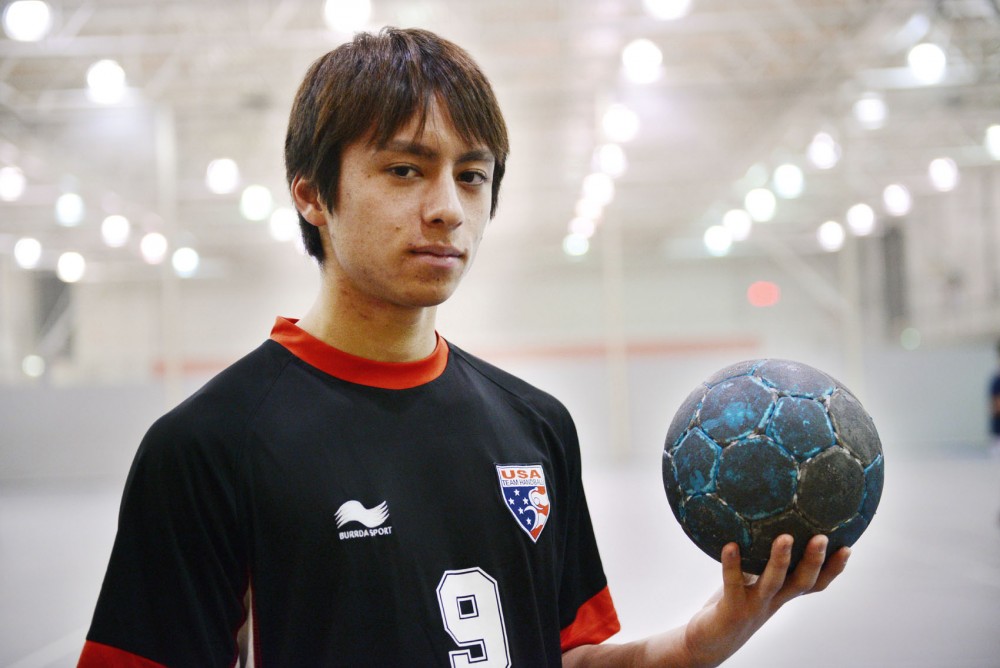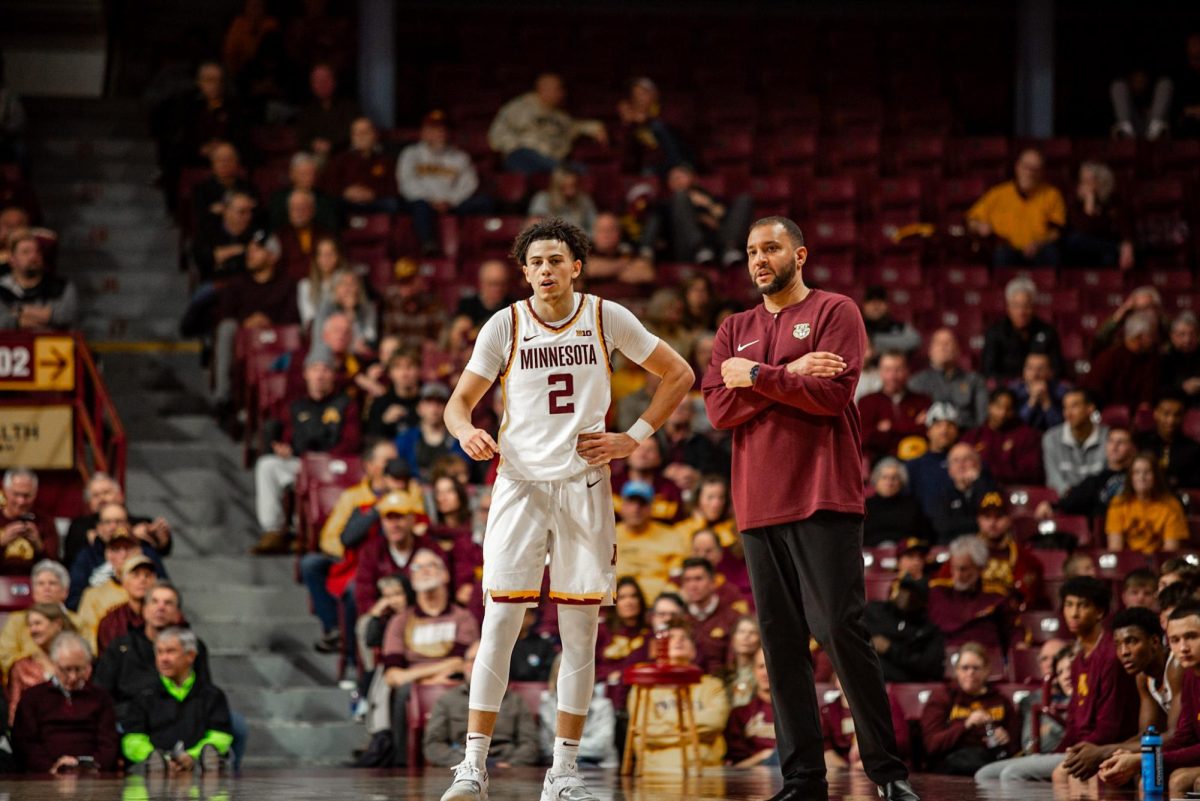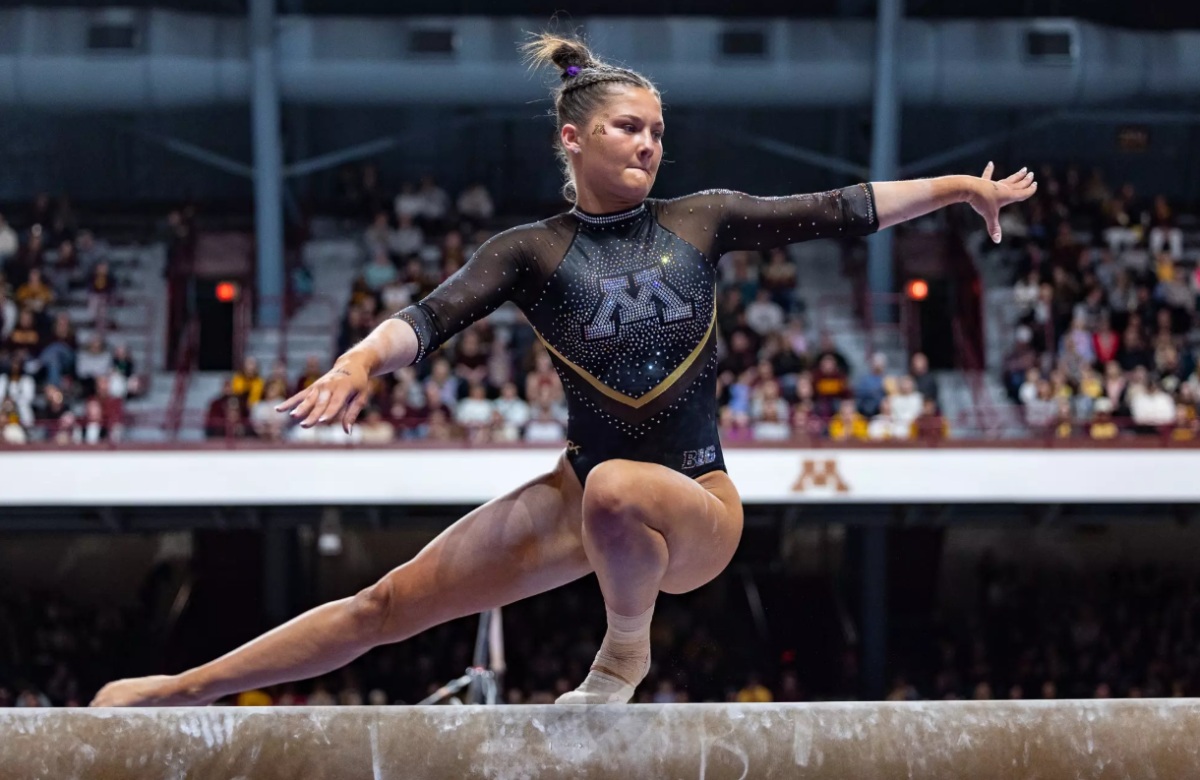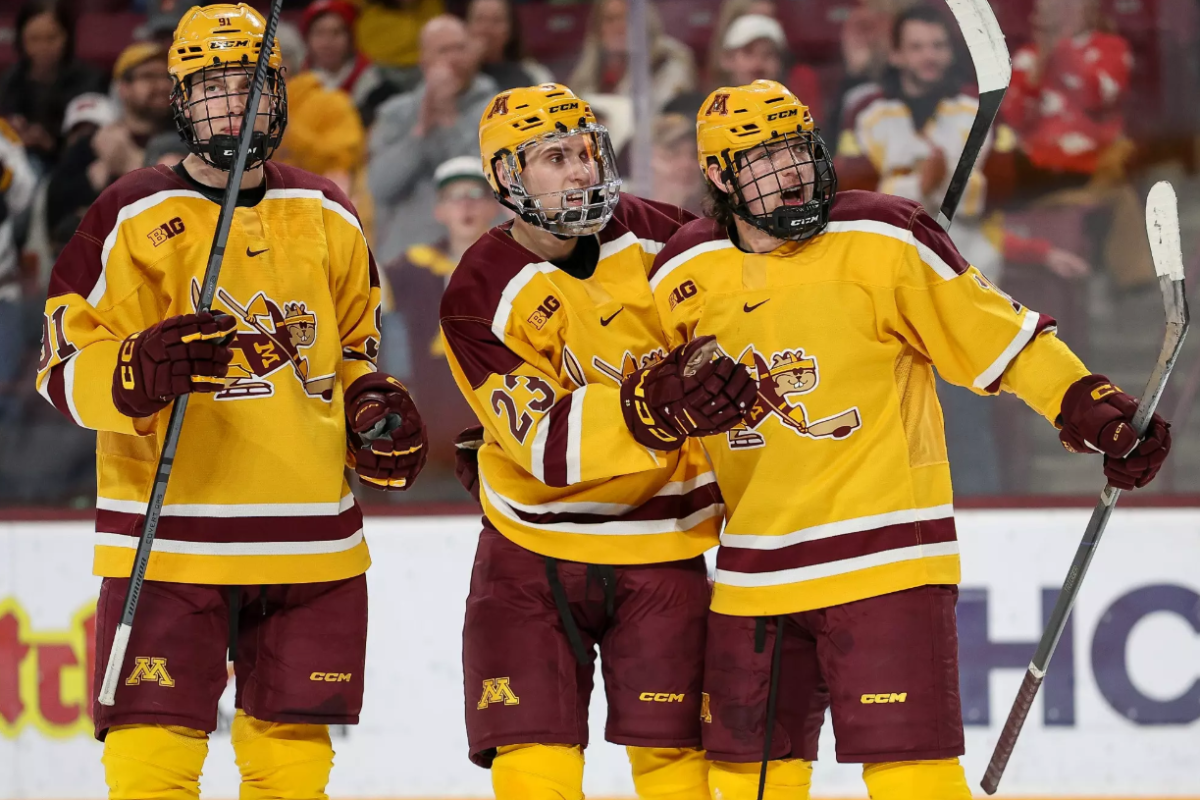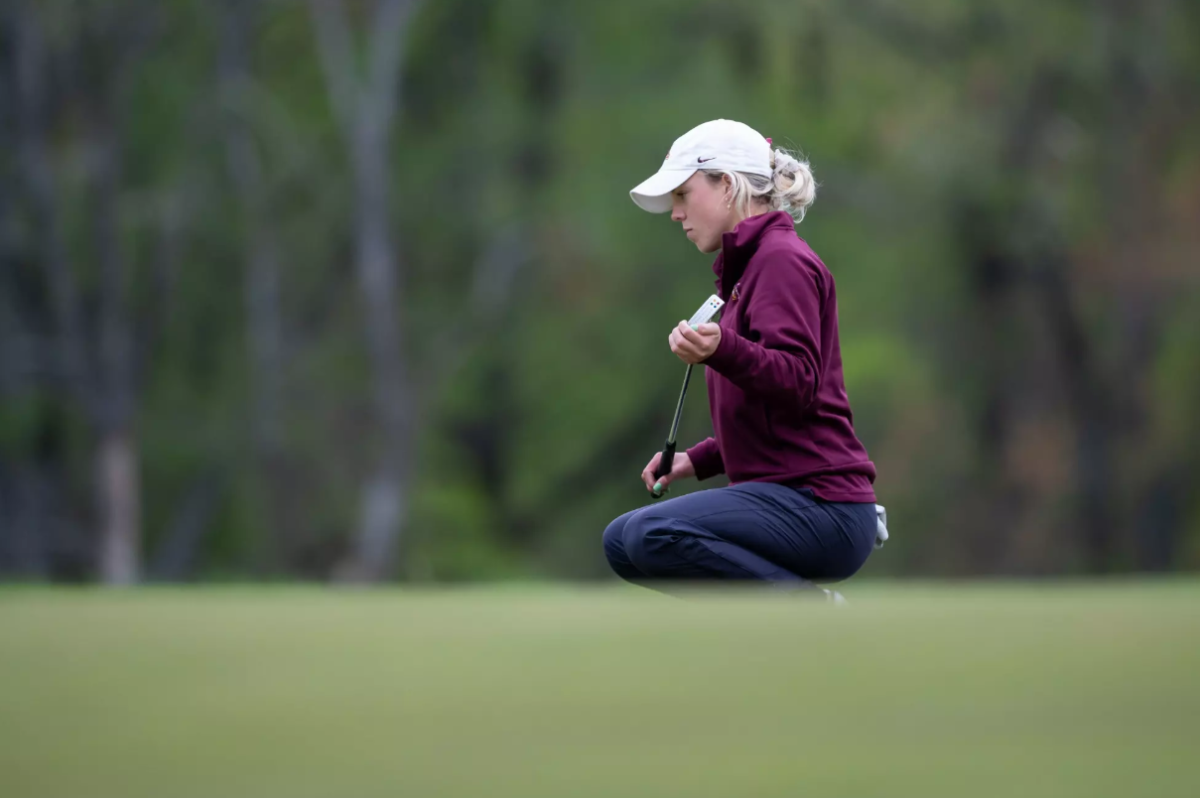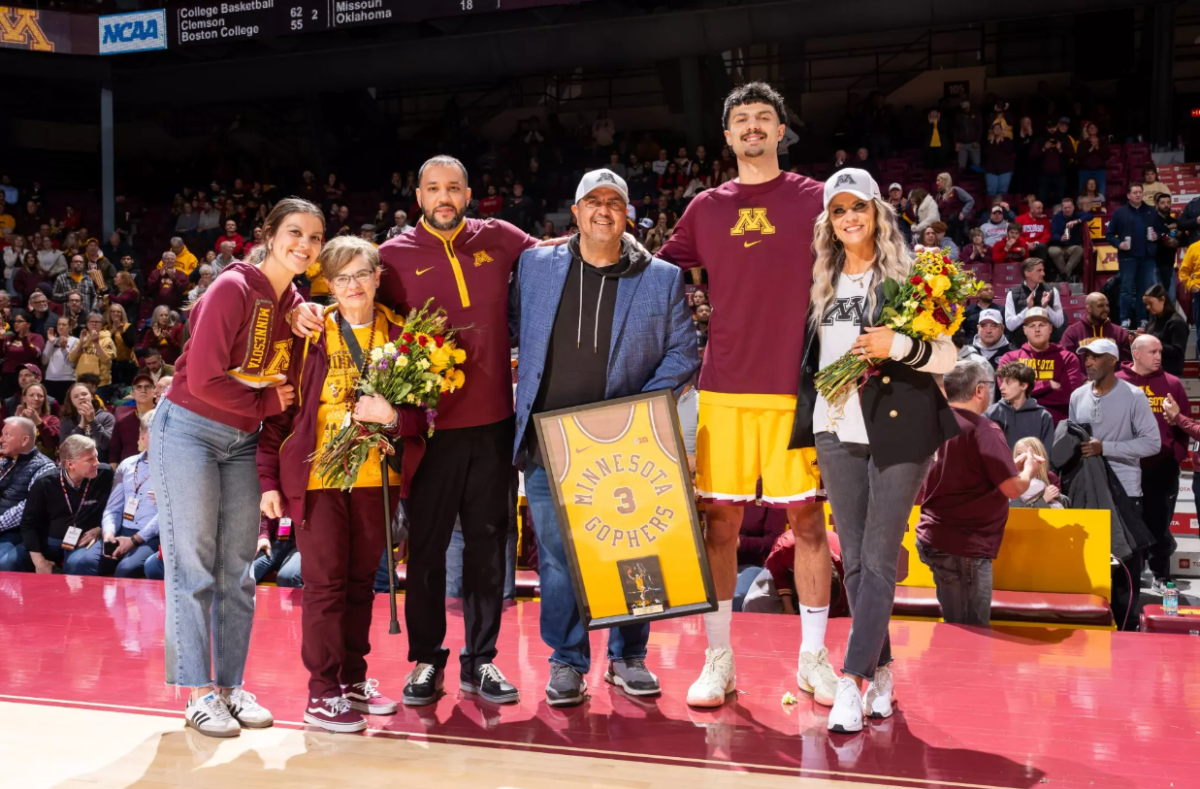Tyler Shukert left Japan in 2009 thinking his short-lived handball career would end.
Shukert said he gave up playing handball because he thought no team existed in the U.S.
But later that year, a friend told him about a unique opportunity in Minneapolis.
Shukert, a mechanical engineering junior at the University of Minnesota, plays for Minnesota Team Handball, a local group that started in 2008.
Craig Rot, a current student, and Wilder Freed, a former student, started the group four years ago. Now, the program has produced Olympic athletes and travels around the country four to five times a year to compete nationally.
Since joining the group in 2009, Shukert has represented the U.S. twice — once on its under-19 team and a few weeks ago as a member of the U.S. Junior National Team in Mexico.The team practices every Thursday night at the Minneapolis Sports Center on Lake Street.
Team handball is played with 14 people, seven on each team, in 30-minute halves. The dimensions resemble a basketball court but with two miniature soccer nets. The ball used looks like a soccer ball but is roughly half the size.
Shukert plays right wing, which is found in one corner of the court.
“Usually [wings] are fast because they do most of the fast breaks. They run a lot,” he said.
Because wing players have a more difficult angle to the net, they have to be able to jump from the arch toward the goalie to have a better chance to score, Shukert said.
In Japan, Shukert played back court, which offers a better angle to the net but is usually reserved for taller players who can throw the ball over others. He made the switch when he arrived in the United States.
Small but fast
Shukert was attending Robbinsdale Cooper High School in New Hope, Minn., when he first walked into the handball gymnasium. He said he was surprised by how good the players were.
“I didn’t expect many people to be playing handball,” Shukert said. “They played a lot better than I expected.”
Freed said his first impression of Shukert was his size.
“He’s small. Handball is typically a sport played by, for the most part, big people,” Freed said. “But Tyler quickly breaks stereotypes.”
Shukert’s speed makes up for his lack of height, Freed said. Combined with his improved court awareness, Shukert can be tough to contain.
“If you’re playing against Tyler, you’ve got to keep the brakes on the game — otherwise he’ll bust it wide open,” Freed said.
Josh Hetterick, who plays right wing, said Shukert has progressed as a utility player.
“He can pretty much play every position,” Hetterick said.
Shukert said handball is a gym sport. When he played in Japan, he played outside on a court covered with sand, which he said was more difficult.
Shukert’s first international experience came in 2011 in Venezuela with the Under-19 U.S. National Handball team.
The team fared poorly in most of its games, but Shukert said the experience of playing against some of the best teams in the world was worthwhile.
Shukert got another crack at it when he made the U.S. Junior National team earlier this month. He said he didn’t have to try out because USA Team Handball already knew him as a player.
Shukert and the 12 other members of the team spent two days in Los Angeles practicing and scrimmaging before flying to Mexico City.
While warming up for the first game, Shukert fractured his pinky. Injuries are common in handball, he said, and he told his teammates he could play.
Team USA lost all four of its games to finish fourth in the tournament. Shukert said that was an improvement from the Venezuela tournament, though, because the games were much closer. One game in Venezuela was a 60-8 loss to Argentina.
The biggest difference between top-level teams like Argentina and the U.S. is experience, Shukert said.
“We were just a team that got together a few days ago,” he said. “They were on a three-month trip [around Europe].”
Participation for Minnesota Team Handball has risen since the summer Olympics. Athletes see the sport on television and then venture out to play, Freed said.
“We didn’t have that many people before the Olympics,” he said. “We’ve had a week where we only had seven players.”
Nearly 30 participants with a range of experience attended last Thursday’s practice.
A future at the U?
One of the founders of Minnesota Team Handball, 39-year-old Rot, said he would like to start a club team at the University. He is starting teams at other Big Ten schools like Wisconsin, Michigan and Iowa.
Rot’s biggest hurdles so far have been Minnesota Team Handball and his schoolwork.
“My wife would leave me if I tried to start another team,” he said. “It’s hard to give up on one [team] and move to another.”
Shukert said keeping students interested would be a big challenge.
“They come and go. Somebody starts a team, some guys gather up, then he graduates. Other people move away,” Shukert said. “It would be hard.”
Rot said he wouldn’t start a team at the University until he had a base of 12 committed people.
The University of North Carolina has a handball program that allows current and former students to play on its team. Rot said that model would be appealing because he could keep some players who had graduated from the University involved.
Jessica Novotny, associate program director for recreational sports, said 25 club teams currently exist under the department at the University.
If Rot were to begin a club team, he would first have to register the group through Student Unions and Activities. After one year, the group could apply to become a club team recognized by recreational sports.
Regardless of what happens at the University, Shukert said he wants to continue playing handball after college.
“I want to go to a city where there is a handball club,” he said. “I definitely want to continue playing handball.”


